It’s the most magical day of the year: National Opossum Day! 🎉
You might be thinking, “A whole day dedicated to opossums? Really?!” In honor of our most marvelous marsupial neighbors, we’re shining this month’s Critter Corner spotlight on the fascinating Virginia opossum (Didelphis virginiana) so you can learn about just how much these eco-superheroes do.
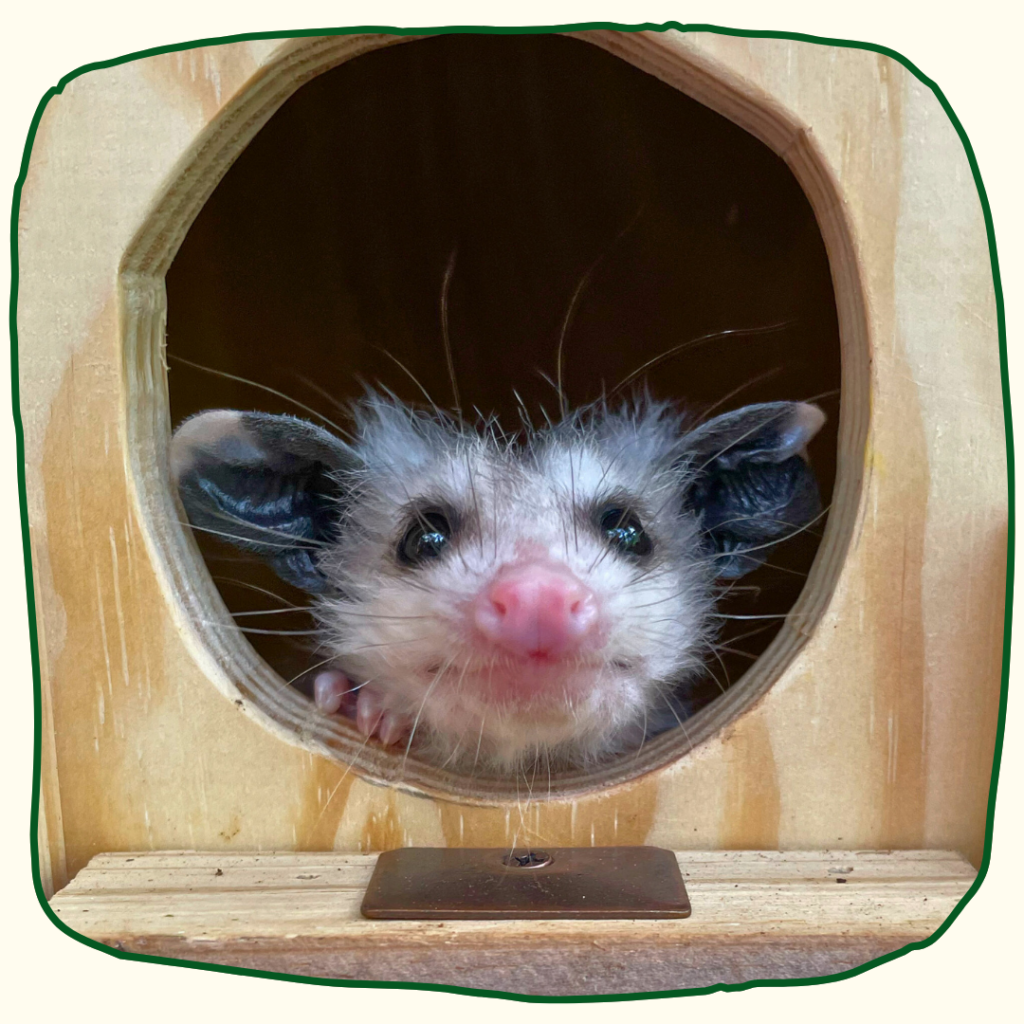
For starters, the Virginia opossum is North America’s only native marsupial (pouched mammal). They may not be as glamorous as their iconic Australian cousins, like kangaroos and koalas, but they’re what we’ve got – and they’ve got seniority! The modern opossum has remained largely unchanged for 65 million years, since the Cretaceous-Paleogene extinction event that killed the dinosaurs. As a result, they’re sometimes nicknamed living dinosaurs. 🦖 Modern Australian marsupials, on the other hand, have diversified more recently. A quick note that opossums live in the Americas whereas possums live in Australia. They’re different animals! Since we can practically hear all of our fellow nature nerds out there begging for us to share the marsupial phylogenetic tree, we’ll include it below. 🤓 🤣
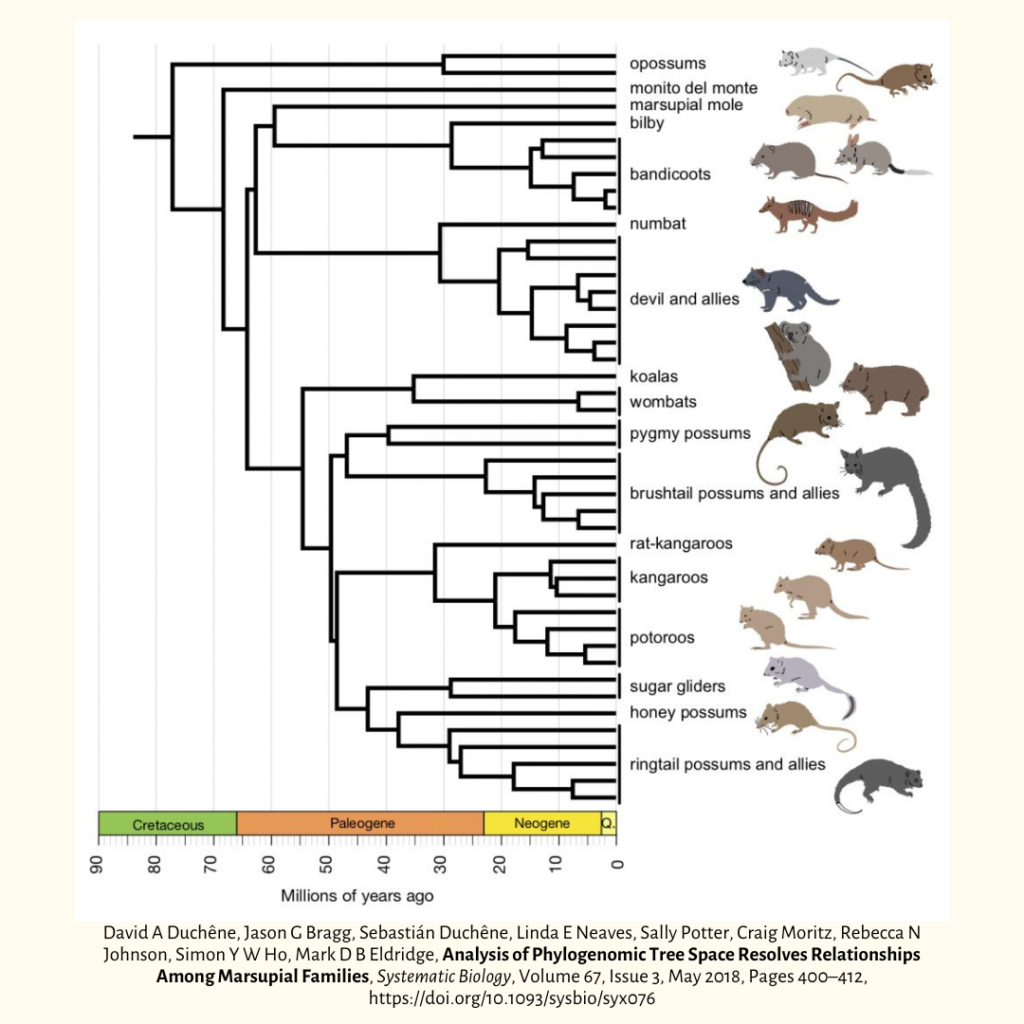
What’s so great about that pouch? Opossums have a bizarre yet effective mode of reproduction. A female opossum gives birth after a pregnancy of just 12 days. In typical marsupial fashion, the babies are essentially embryos. They are each pink, underdeveloped, and just a smidge bigger than a pea. They use microscopic claws to climb from the birth canal to the pouch, where they’ll each search for a teat to attach to and drink a steady milk flow from for the next 60 days or so. When we rehabilitate infant opossums at the Sanctuary, we must tube-feed them to emulate this natural process. That’s a good reminder to leave wildlife rehab to licensed professionals. 😉
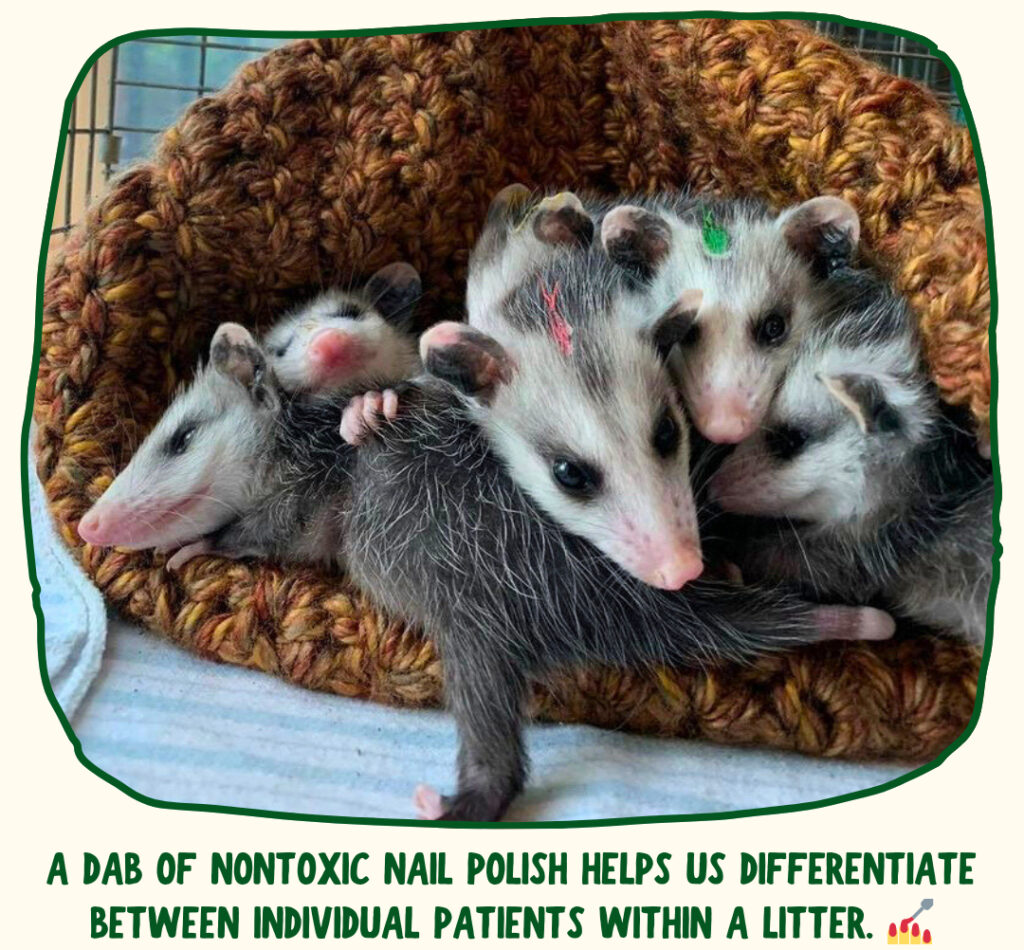
Natural selection operates quickly on these youngsters. Mom may give birth to 20 babies, all of whom together can fit easily into one teaspoon. However, mom has just 13 teats. Only up to the 13 fittest of these teeny little pink beans will successfully latch onto a teat in the pouch and stick around. The others will fall out of the pouch and die. Nature can be tough, but opossums have sure proven their evolutionary success by surviving for millions of years!
Baby opossums become independent fast, too. Once the joeys (yup, joeys!) are roughly two months old, they’ll begin to climb around mom and ride on her back. They’ll be ready to be on their own by 3 to 4 months, once they’re about 8 inches from tip of nose to base of tail. 📏
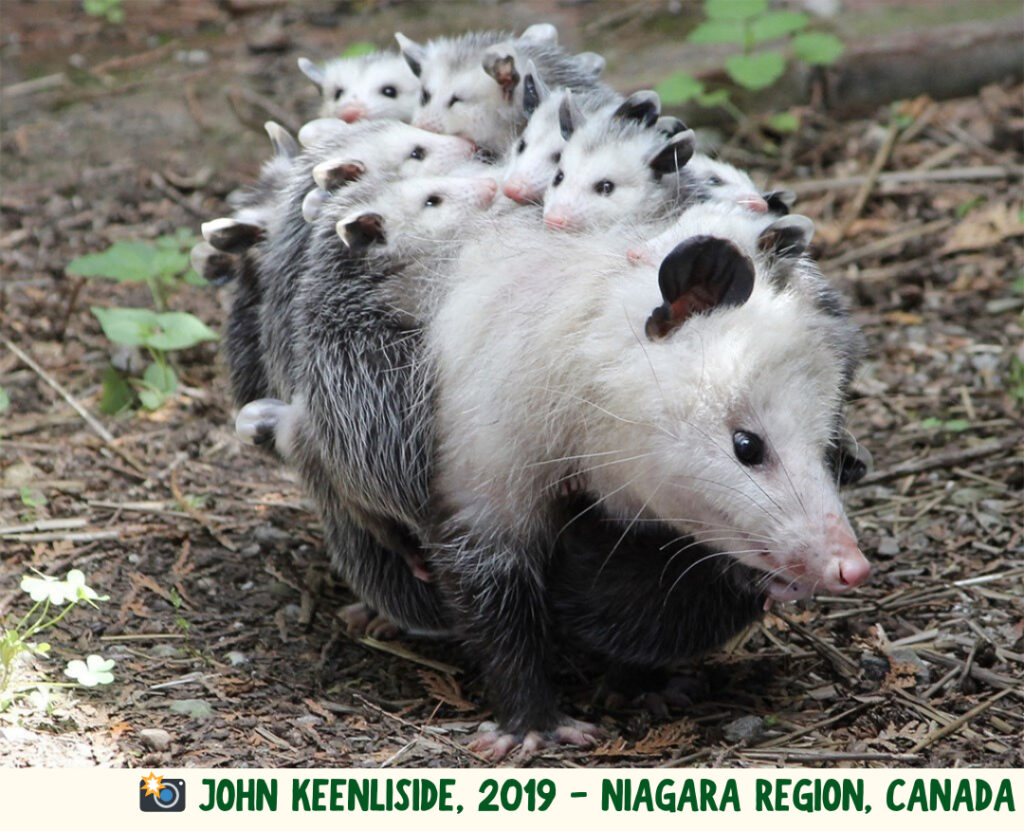
If you’re not sure about a young opossum’s size, give us a ring at RWS and we can help determine if the opossum needs our care. Folks are often surprised to learn that the “baby” in their yard is actually an independent juvenile ready to take on the world. Their quick development from birth through independence makes sense given that Virginia opossums live only one to two years in the wild. 😮 However, shorter lifespans work out just fine, evolutionarily-speaking, when you’re having over a dozen babies in your first year of life.
In addition to their prolific parenting, Virginia opossums are valuable members of our ecosystem’s cleanup crew. They are opportunistic omnivores, meaning they’ll eat just about anything. Virginia opossums serve as nature’s very own janitors! 🧹 They happily munch on things like fallen fruit, decaying plants, and even carrion (yum, dead critters). They’ll also help control populations of birds, small reptiles, and mammals like invasive house mice. Best of all? Virginia opossums enjoy eating insects and arachnids like ticks, too! Every tick they consume is one less potential Lyme disease carrier wandering through your backyard. If you’re not a fan of ticks, you should be a big fan of opossums.
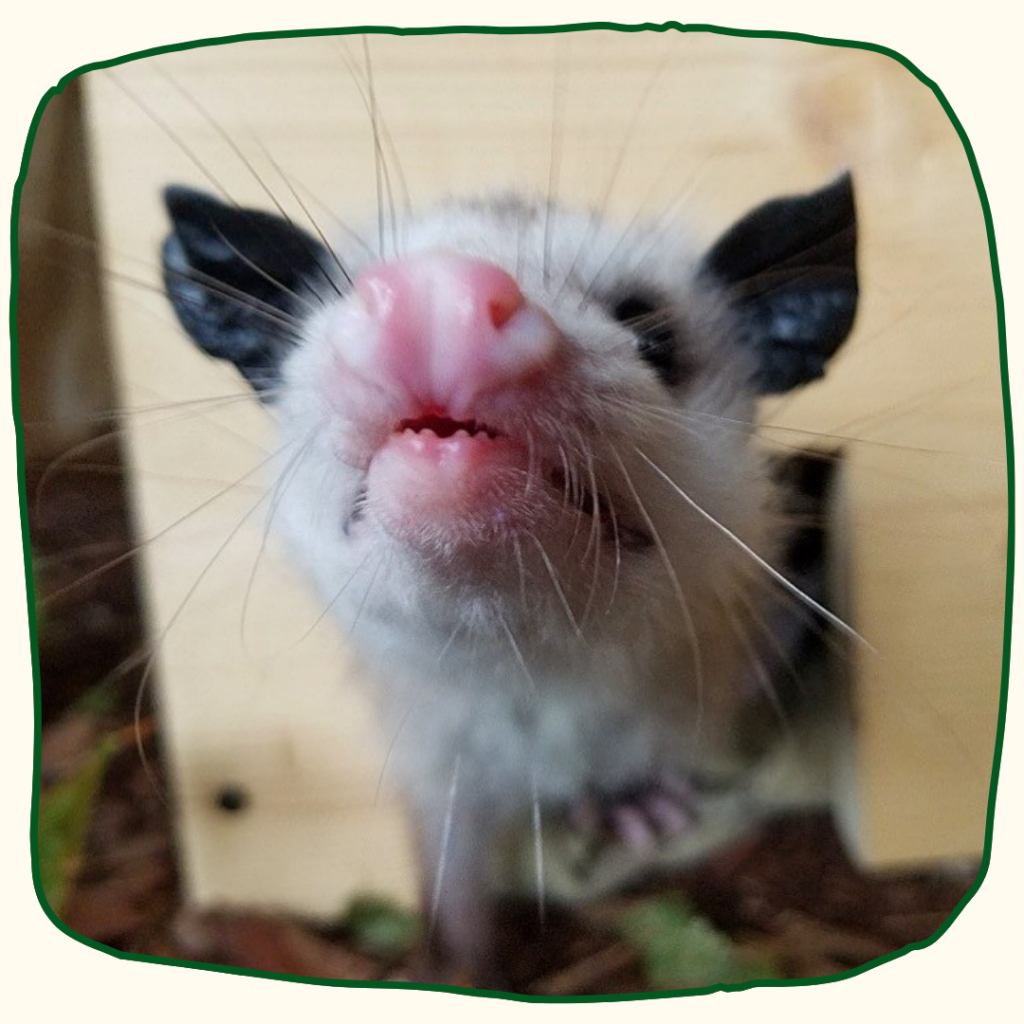
Opossums have other surprising superpowers, too! 🦸♀️ They have an innate immunity to most snake venoms and can happily enjoy a tasty copperhead snake meal, for example. They are also less likely than many other native mammals to contract and transmit rabies due to their lower core body temperature. Keep in mind that any mammal worldwide can get rabies, though, so never approach a wild animal without explicit instruction by a licensed rehabber.
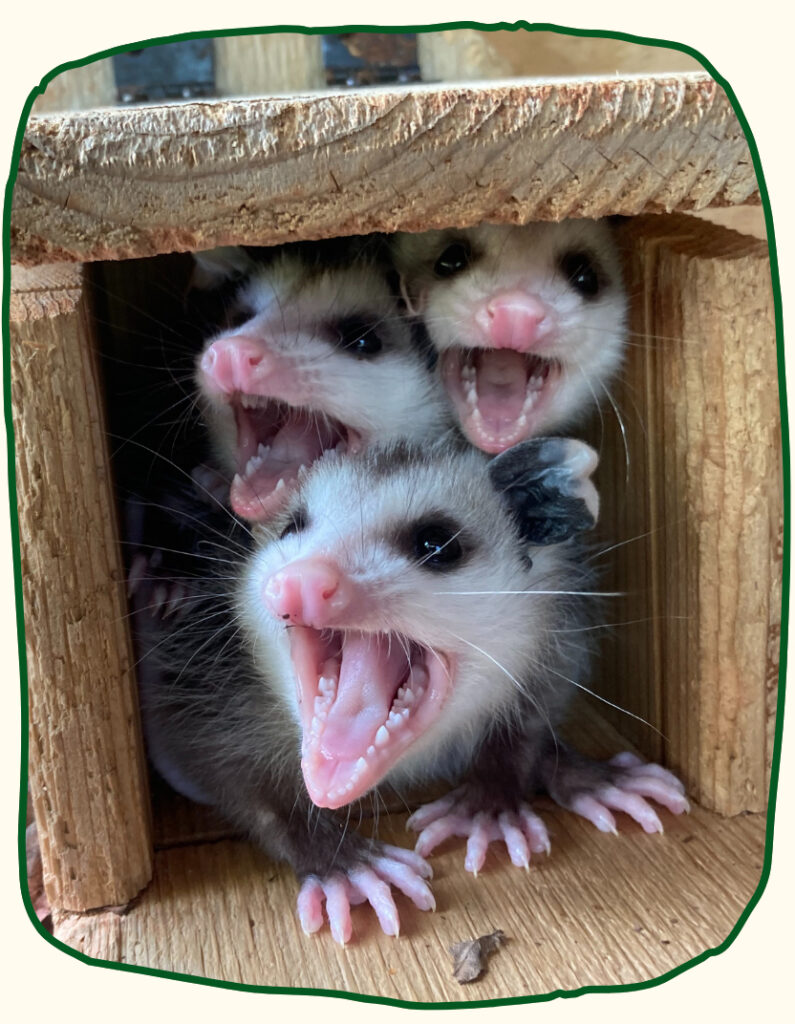
Speaking of approaching animals, you might have heard (or witnessed!) an opossum’s impressive self defense mechanism known as “playing ‘possum.” This is an involuntary catatonic response during which an opossum puts on an Oscar-worthy performance of being dead or sick. They freeze, their body temperature falls, and they emit some putrid smells from their glands. This is often enough to ward off curious predators like foxes, bobcats, or birds of prey. You’d lose interest, too, if the hamburger you were about to eat suddenly smelled like a rotting corpse!
Sadly, though, “playing ‘possum” and the opossum’s nocturnal, low-to-the-ground nature can get them in trouble when faced with threats they haven’t evolved defenses against. 😞 We’re talking about cars. “Playing ‘possum” and other defensive mechanisms evolved over millions of years, so modern animals are not able to evolve defense mechanisms at the speed-of-light rate that human technologies have evolved at in the past 100 years. Unfortunately, the majority of orphaned opossum patients at the Sanctuary come to us after their mother was killed by a car but her babies survived in her pouch. We admit over 150 orphaned joeys each year rescued from these very circumstances.
If you’re driving after dark, keep your eyes peeled and drive carefully! 🚗 This is especially true from February through September when opossums are most likely to be on the move looking for mates and juveniles are still learning the ropes. Should you come across a freshly-deceased opossum, consider stopping to check for movement on its belly area. The pouch is not hard to see nor hard to access on a female opossum. Movement will be very obvious, and you might just save a life…or 13 lives!
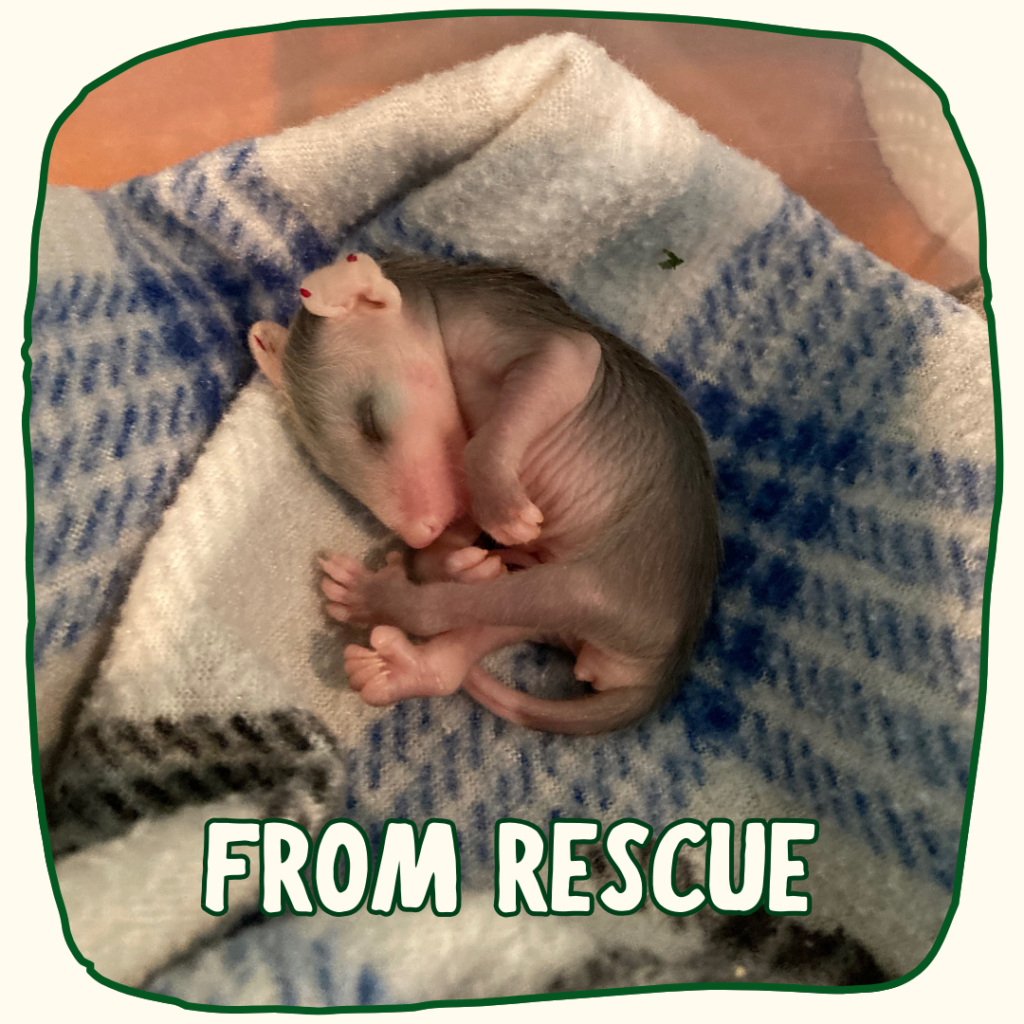
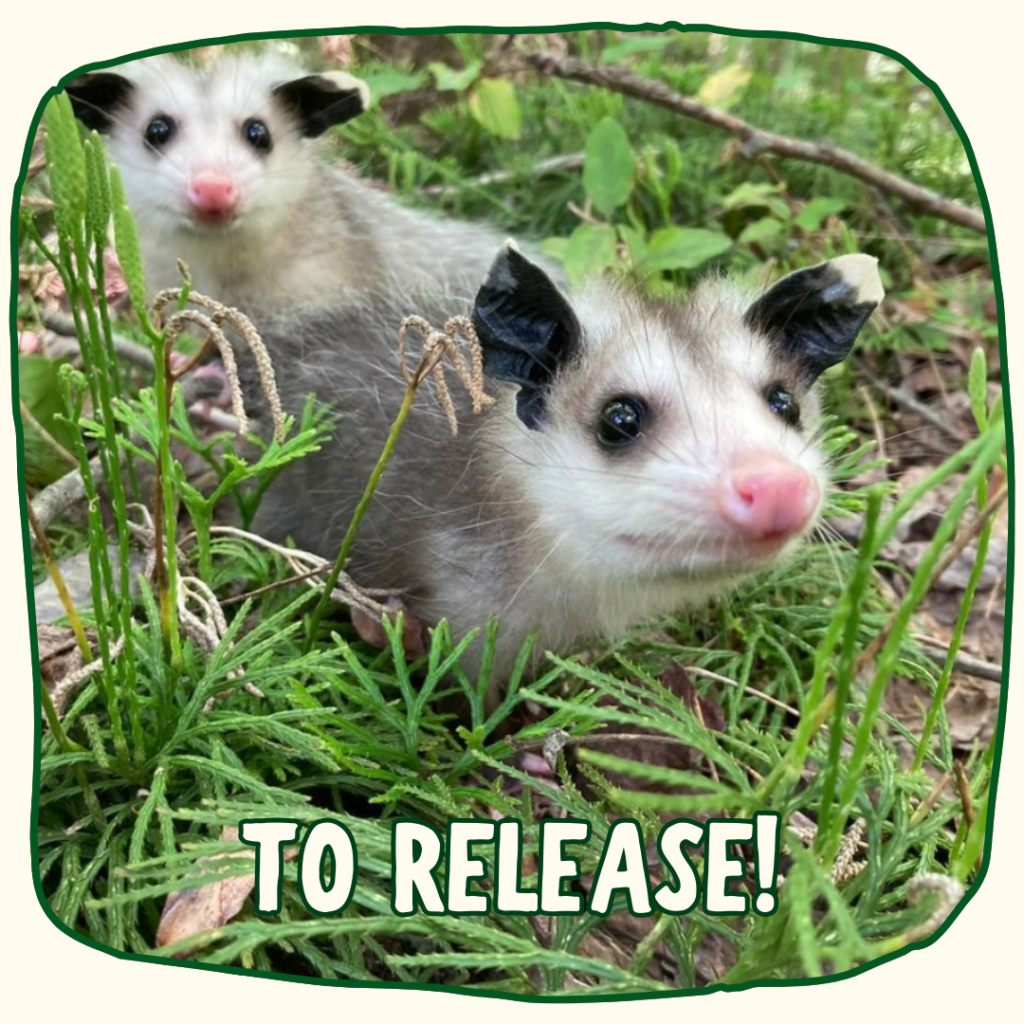
At the end of the day, Virginia opossums may not win any beauty contests (though we think they’re adorable), but they are critical for a healthy ecosystem. Here are a few ways you can help our opossum neighbors stay healthy and happy:
- Leave them be! If you see an opossum, let it go about its business. Seeing a nocturnal opossum during the day does not mean it’s sick, as long as it’s moving normally otherwise. Move along, friend. 👋
- Secure trash and pet food. Opossums, like raccoons, have adapted well to urban settings due to their not-so-picky palates. A tightly closed garbage bin keeps them from scavenging in your trash. 🗑️
- Keep cats indoors. Outdoor cats are prime (and unnatural) predators for native opossums, particularly infants and juvenile opossums. RWS encourages cat owners to create enriching lives indoors for your beloved feline family members. 🐱
- Avoid using poisons. Rodenticides and garden chemicals can harm not just opossums but also other beneficial wildlife, including owls and hawks. ⚠️
So the next time you spot an opossum strolling through your yard, tip your hat to them for their environmental service. Let’s show some love (from a safe, respectful distance) to this misunderstood, tick-munching, drama-queening critter. After all, they’re doing their best to keep our wild world in balance.
Join us in celebrating these lovable, unsung heroes on National Opossum Day by sharing this post with a critter-loving friend! 🎉
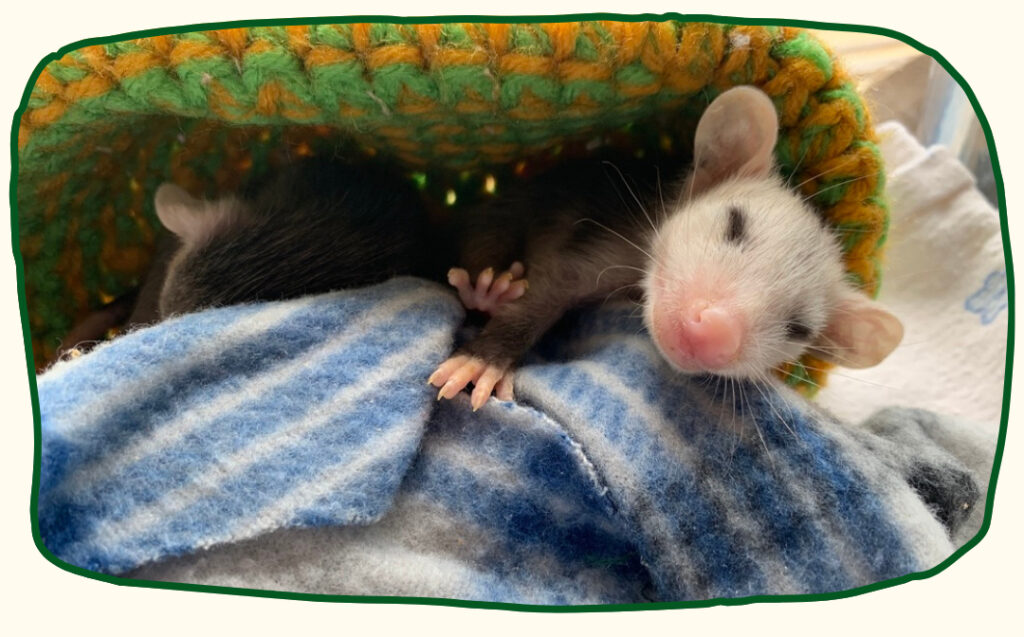
October 17, 2024
Published:
Be the first to comment!